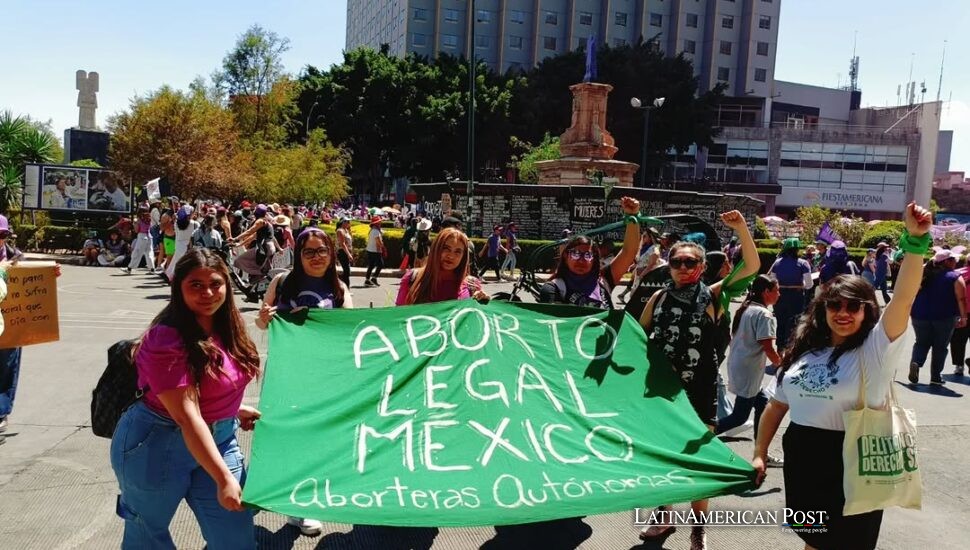Crossing Borders: US Doctors Learn Abortions in Mexico

After the Supreme Court reversed Roe v. Medical, students plus doctors in America encountered reduced opportunities to study abortion care. To gain complete instruction, some individuals now go to Mexico. This situation shows a significant change in reproductive healthcare education.
A New Reality for Abortion Training
Pamela Merritt, the executive director of Medical Students for Choice, told The Guardian that current training programs do not reach the standard of care. Her statement shows the problems many want-to-be abortion providers have across the United States. Because the US Supreme Court reversed Roe v., Many states now forbid almost every abortion. This legal change created deep thinking within the medical community because abortion training in the US poses growing uncertainty.
For instance, Dr. Sebastian Ramos, a family medicine resident in California, shows this crisis. Although he lives in a state that continues to allow abortion, he discovered his three-year residency guarantees only three days of training at a Planned Parenthood clinic. “That’s just not enough if you want to practice abortion care,” he told The Guardian. Eager to gain more robust experience, Ramos traveled to Mexico City for two weeks of in-depth training at a clinic run by global nonprofit MSI Reproductive Choices and its Mexican arm, Fundación MSI. In just his first week there, Ramos performed around 60 abortions—an amount of hands-on practice he would never have acquired in such a short time in the US.
A similar story played out for New Jersey medical student Lauren Wiener. She originally intended to train in Arizona in 2022, but when providers in that state halted abortions after Roe’s reversal, her plan fell through. Instead, she traveled to the UK for a week-long program with the British Pregnancy Advisory Service (Bpas). Wiener told The Guardian that this skill helps save lives. She stressed how important learning abortion procedures is. Doctors who do not plan to conduct these procedures often require this knowledge.
Confronting Systemic Barriers in the US
Medical education in America follows a complex network of accrediting bodies and university hospitals. Since the 1990s, the Accreditation Council for Graduate Medical Education (ACGME) has required obstetrics and gynecology (OB-GYN) residency programs to offer abortion training. However, many large hospitals rely on external abortion clinics—often free-standing and separate from the academic institution—to teach residents how to perform the procedure. Even before Roe’s fall, this system left significant gaps. One 2019 study revealed that only 64% of OB-GYN residencies offered “routine training with dedicated time” for abortion skills. The situation is even more challenging in family medicine; the ACGME does not require family medicine programs to provide abortion training at all.
Now, with Roe gone and the ensuing closure of more than 100 abortion clinics, accessible training opportunities have dwindled further. Even where abortion remains legal, clinics are overwhelmed by patients traveling from states that have banned the procedure. Under these circumstances, many clinics lack the time or capacity to accommodate trainees. Even though OB-GYN programs in states with bans must locate placements outside the state for residents, questions persist regarding enforcing those mandates’ effectiveness. The Guardian reported that programs did not lose accreditation in the past year, even with bans in several locations. This caused some people to suspect official requirements were ignored.
Merritt, whose organization helps connect US-based medical students to training abroad, described this trend as “a relief and incredibly sad.” She told The Guardian: “It’s a relief because it means future doctors will not be entirely cut off from learning these essential skills. But, sadly, we have to send them abroad for something that was once routinely taught here.”
Mexico’s Expanding Role and Global Perspectives
In the US, abortion rights have more restrictions. Mexico’s laws changed. In 2023, the Supreme Court made abortion legal across the country. A global trend occurred, where over 60 countries eased abortion laws during the last 30 years. Recognizing the growing demand and its newfound legal latitude, Fundación MSI in Mexico has significantly expanded its training programs. In 2023, MSI clinics in Mexico trained nine American doctors, rising to 27 the following year, and numbers are projected to double again. “Training, training, training—it is key to have less danger for actual patients,” said Araceli López-Nava, managing director of MSI Latin America, in remarks reported by The Guardian.
For Ramos, heading to Mexico immediately allowed him to hone his skills in a supportive environment. This worldwide partnership presents two advantages. Participants can hone their abilities to treat patients. They get the opportunity to study another country’s health system. For instance, Ramos reported to The Guardian: “I feel ready to care for those who need me in the US.” However, the option is far from universal; the travel and lodging can be costly, often running into thousands of dollars, and MSI requires prospective trainees to demonstrate at least some abortion experience. Language barriers can also pose challenges.
Across the Atlantic, the British Pregnancy Advisory Service has reported a surge of applications from American students and residents. Dr. Patricia Lohr, who heads research and innovation for Bpas, trained to become an OB-GYN in the US. Speaking to The Guardian, Lohr emphasized that certain American academic hospitals provide minimal or no abortion care themselves, making external programs crucial. She lamented the “shame” that students and doctors must travel so far to learn a basic healthcare procedure: “There are many trainees who would like to obtain abortion skills but cannot get it locally, and so they get diverted into doing something else.”
Despite the barriers, organizations such as Medical Students for Choice, MSI, and BPAs continue to bridge the widening gap. They provide structured curricula, experienced mentors, and immersive training that was once more readily available within US borders. For doctors like Ramos, these international avenues help ensure that patients at home will receive comprehensive care—even if the politics of abortion remain fraught. López-Nava spoke to The Guardian and mentioned his awareness of the problematic situation in the US. He added their eagerness to assist.
Also Read: Dominican Jet Set Collapse: Mourning, Resilience, and Unity
The continuous flow of American medical professionals as they travel to Mexico and other places reveals a significant change in abortion care education and learning. Rather than accessing routine instruction at home, today’s would-be providers are flying overseas, crossing borders that continue to divide not only nations but also ideologies about reproductive rights. As more states implement restrictive legislation, the future of US abortion training may well depend on these international partnerships—so long as eager residents and medical students can afford the cost, commit the time, and overcome the language hurdles involved in crossing borders for a procedure once taught in their backyard.





